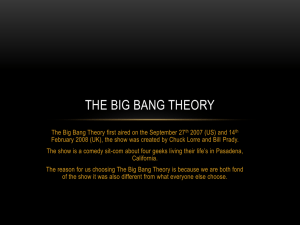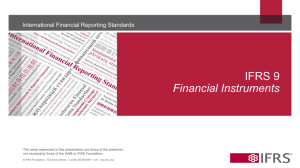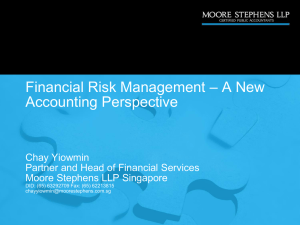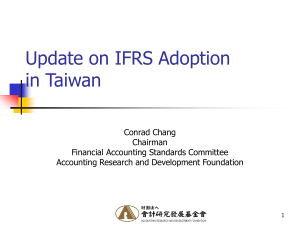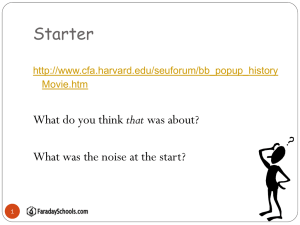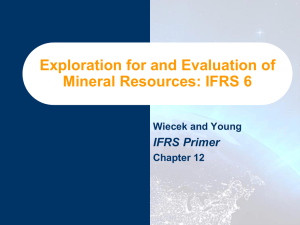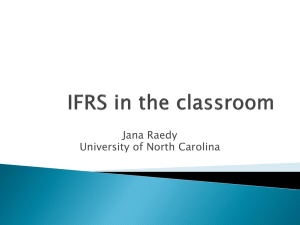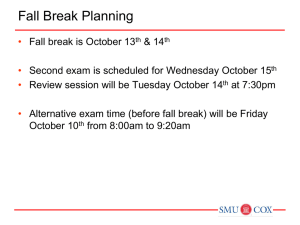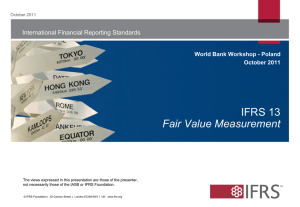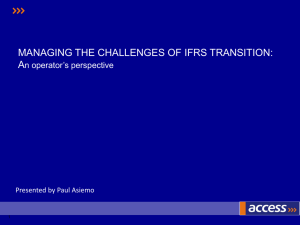IFRS Big Bang Adoption Presentation
advertisement
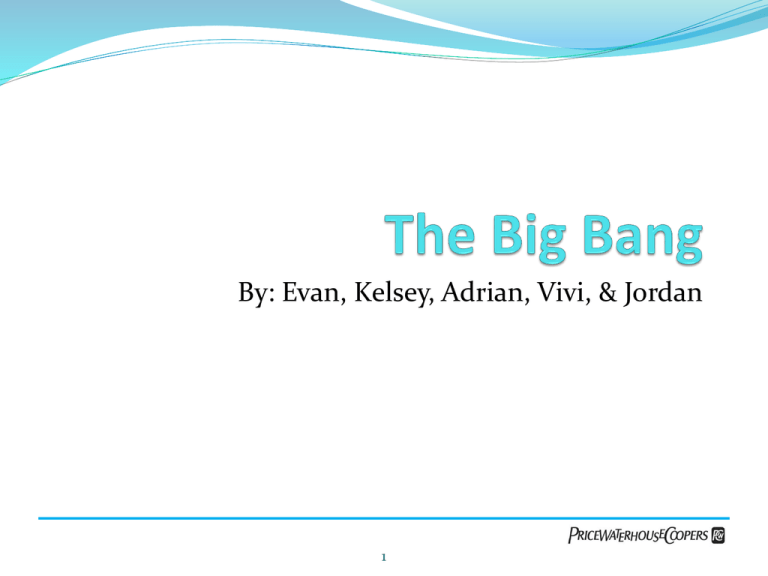
By: Evan, Kelsey, Adrian, Vivi, & Jordan 1 The Big Bang Approach The problem at hand: The “Big Bang” approach vs. “Staggered Transition” Our Decision: The Big Bang approach is best method Companies start accounting in accordance with IFRS beginning January 1, 2015 2 IFRS: Big and Small Business Complete understanding by date of adoption Principles = 2,500 pages (IFRS) vs. 25,000 pages (USGAAP) Comparative statements: current and prior year only Potential need for additional employees to convert 2014 financials during 2015 International understanding Adoption regardless of company need “...a single set of high-quality global standards.” – Arleen Thomas, AICPA 3 Big Bang: Big Business Pros: Consistent statements throughout quarters Less hassle for businesses already engaging in international affairs Less interaction with the SEC, the better Cons: For some companies, having to switch all at once might take away from their current tasks No way to ensure that big businesses are going to be ready to convert under the big bang 4 Staggered Transition: Big Business Pros: Series of checkpoints to ensure progress Less pressure and more confidence in transition to IFRS Large companies can spend more time to become proficient in IFRS Cons: Inconsistent statements throughout quarters Increases SEC interaction More costly for the SEC to continually monitor conversion 5 Big Bang: Small Business Pros: Transition to IFRS for small and medium enterprises (SME’s) Modified version of IFRS – less encompassing Less costly Less interaction with the SEC during transition phase Cons: Pressure and expectations with SEC Unnecessary switch 6 Staggered Transition: Small Business Pros: Guidance throughout the process Less confusion Cons: Transition period will yield inconsistency for business owners Difficult for SME’s to meet demanding checkpoints “Babysitting Effect” Unnecessary switch 7 PwC: Big Bang and Staggered Overall effects on PwC should not vary much between approaches Training is in accordance with PwC’s schedule Staggered transition, PwC will need to teach employees in concert with the SEC checkpoints Opportunity to increase revenue through training companies Ernst & Young significantly aided Coca-Cola in implementing IFRS Cost to teach additional employees vs. future revenue increase 8 Big Bang Time Line Implement IFRS standards beginning January 1, 2015 Issue 10-Q statements for 2015, supplemented with quarterly figures from 2014, all of which are in accordance with IFRS 10Q filings, also including 2004 quarterly figures, in accordance with IFRS Prepare for Big Bang (IFRS) Q1-15 01/01/2014 Q3-15 Q2-15 present 01/01/2015 9 01/01/2016 Other Factors Supporting Time Line Investor knowledge of IFRS Substantial time needed for investors to become fluent in IFRS Investors need to fully understand IFRS before it is implemented Initial Public Offerings SEC currently requires five years of audited historical financial Adjusted IPO deadline Time needed to adjust legal contracts 10 Questions? 11 By: Evan, Kelsey, Adrian, Vivi, & Jordan Big Bang Approach Effects on PwC More consistency among financial statements until date of adoption (01/01/2015) Less interacting with the SEC No way to ensure that companies will be ready for the transition on the Big Bang date Less variability of effects from two approaches Staggered Transition Additional Support for Time Line Series of checkpoints to ensure participation Investor knowledge of IFRS Increased interaction with the SEC Initial Public Offerings Inconsistent financial statements during transition period Legal documents Prepare for Big Bang (IFRS) Opportunity for increased revenue 10Q filings, also including 2004 quarterly figures, in accordance with IFRS Q1-15 01/01/2014 Q3-15 Q2-15 present 01/01/2015 01/01/2016

